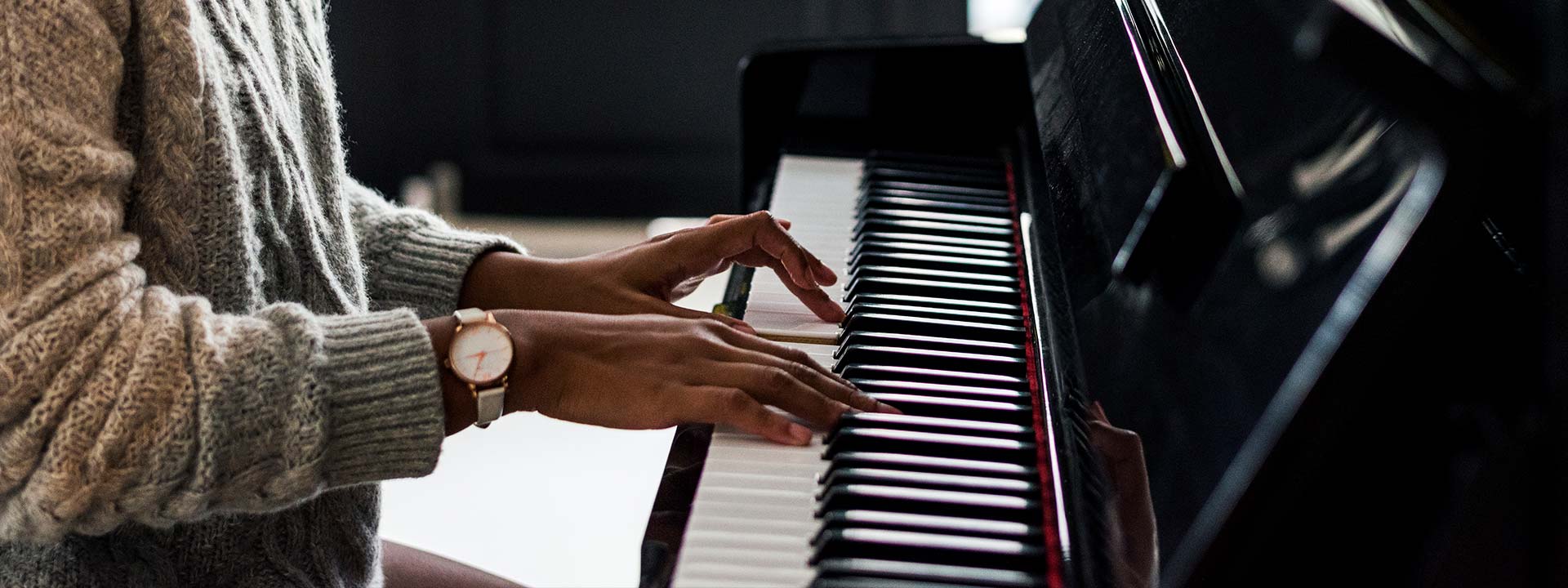
At Piano Forte Music School, we’re often asked the difference between practicing on an acoustic piano vs a keyboard. Parents of new students sometimes wonder if their child will be motivated to continue with piano lessons, or if their interest will wander to other activities. Before spending the money on a piano, they can use a keyboard for home practice. They assume keyboards (or the more expensive digital pianos) are similar enough to a piano that practicing on these instruments would be a good substitute if the family didn’t already have a piano to practice on at home. Acoustic pianos, keyboards and digital pianos all have benefits but with some notable differences.
Acoustic Piano vs Keyboard
Acoustic pianos are what most people are referring to when they simply say “Piano.” Whether it’s an upright or a grand piano, the method each acoustic piano uses to create sound is the same. When a key is pressed a small hammer strikes the string of the instrument, making the string vibrate. Each individual key has its own hammer. Releasing the key causes a damper to stop the string from vibrating and brings the note to an end. Pianos have 88 weighted keys and 3 pedals to control the sound. The sound that comes from an acoustic piano provides a richness in tone that can’t be matched.
Keyboards often come with fewer keys than pianos. Most come in 49, 61 and 76 key versions with only the higher end, more expensive keyboards including 88 keys. Another difference when looking at a piano vs a keyboard is that the keys on a keyboard are not weighted like acoustic piano keys. They are often lighter, sometimes thinner with a different feel than the weighted piano keys. For this reason, practicing on a keyboard will not replicate the finger pressure and correct hand position that you would experience when you practice on an acoustic piano. The keyboard is lightweight and portable, with no foot pedals to control the sound. You can play with a keyboard while sitting on your couch, whereas playing the piano requires proper sitting position and posture. Another big difference between the piano vs the keyboard is that the keyboard is not designed to mimic the sound of a piano. With additional sound effects in addition to the notes, a keyboard is more of a synthesizer. At prices ranging from under a hundred dollars to around a thousand dollars, a keyboard may seem like a good alternative vs a piano, but the differences are many.
Digital Piano or Acoustic Piano?
Digital pianos are the next step up from keyboards. They are typically more expensive than keyboards with the higher-end models reaching up to $10,000. Digital pianos come with 88 weighted keys, include piano pedals to control the sound and are closer in sound to an acoustic piano than a keyboard.
For those students without a piano at home to practice on, the higher-end digital pianos with weighted keys and pedals can be used when students are first beginning to practice. Young children and elementary-level students can practice on a digital piano while they are learning the basics. However, as the digital piano is secondary to the experience of playing an acoustic piano, students should look to move to practice their piano lessons on an acoustic piano as they progress to more advanced piano lessons. Lower end digital pianos don’t replicate the amazing quality of sound that comes from an acoustic piano which is a big part of the piano experience.
The True Sound of a Piano
When looking at a piano vs a keyboard, or whether a digital piano is suitable for piano practice, consider the differences between the instruments. For depth of sound, touch and the full experience of a piano, there is no substitute for an acoustic piano. Although keyboards and digital pianos offer their unique benefits when students learn and practice on an acoustic piano, they develop the technical skills, piano performance skills and an ear for music that only comes from playing a piano – an experience that is unmatched by any other instrument.
